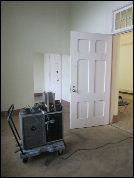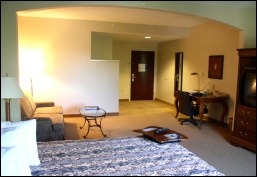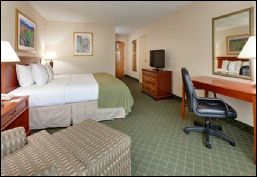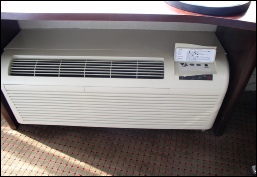Hospitality
Operators of hotels and motels often seek that designs of guest room and meeting room spaces achieve certain acoustical goals to achieve desired comfort levels and privacy of the users of the spaces. The design objectives can include limiting background noise levels produced by ventilation systems and transmitted from outdoor sources, optimizing sound and impact isolation,between spaces, and limiting reverberation. Minimum requirements for sound and impact isolation between dwelling spaces and between dwelling spaces, corridors, and other public areas may be regulated by applicable local or state building codes. Building codes commonly define the acoustic ratings of demising constructions specified using standard design ratings or field tested ratings in terms of Sound Transmission Class and Impact Isolation Class.
Additional requirements for STC ratings of constructions of guest rooms, meeting
and conference rooms, fitness spaces, public spaces, and other areas may be contained
in the hotel design guidelines of the hotel chain. The hotel guidelines may specify
maximum limits on background noise levels produced by ventilation systems, and goals
for reverberation times in designated spaces. The hotel guidelines may further specify
STC ratings of exterior constructions, or may alternately specify maximum acceptable
levels of noise intrusion from outdoor sources. Other reference documents that can
be used to determine selections for interior and exterior construction of hospitality
spaces for sound attenuation may include ASHRAE Standard 189.1P Standard for the
Design of High-
Aurora Acoustical Consultants reviews the hotel owner’s design requirements and information
provided by the architect to evaluate design options for new facilities and those
under renovation. Recommendations are provided for designs of constructions between
hospitality spaces and along corridors, for designs of exterior walls and windows,
for selections of room finishes and furnishings, and for designs of room ventilation
systems. Acoustical field testing is performed to evaluate the as-




